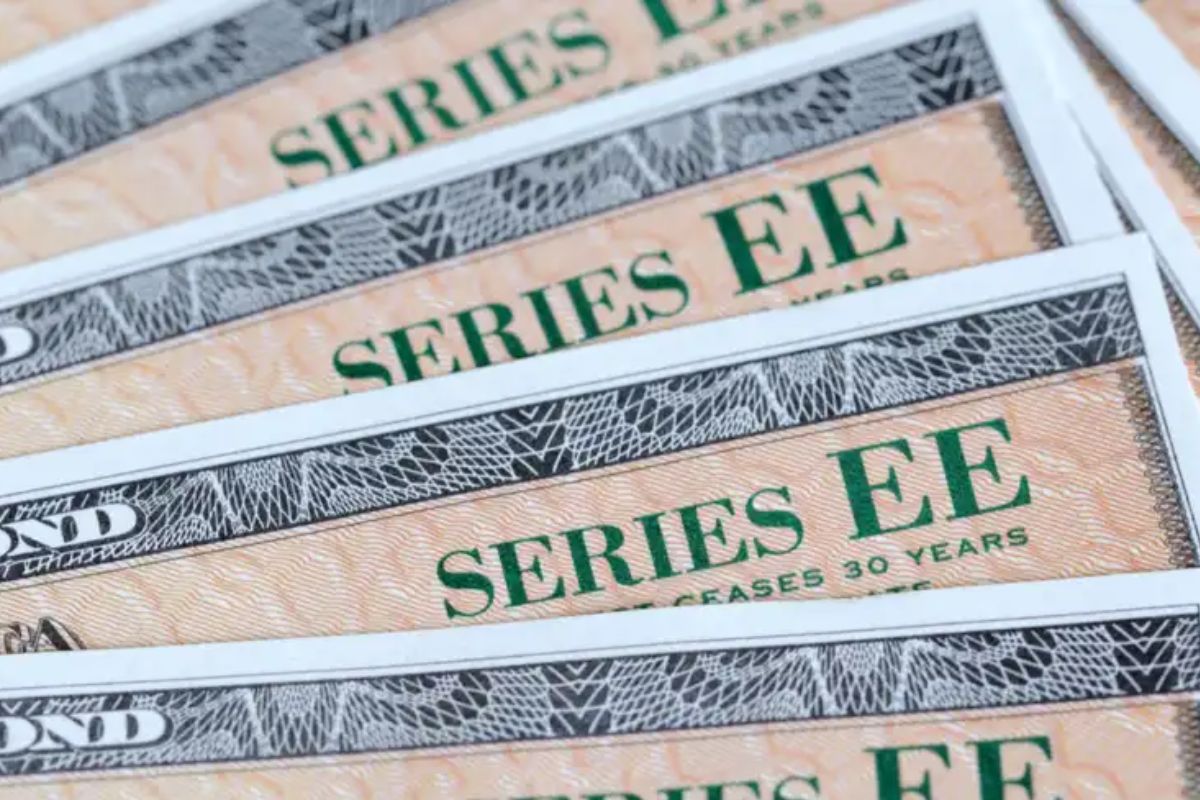U.S. Savings Bonds represent a secure and patriotic way for Americans to invest in their country’s future. As debt securities issued by the United States Department of the Treasury they serve a dual purpose: helping to fund federal expenditures and providing a safe investment option for citizens.
Introduction
U.S. Savings bonds were first introduced by President Franklin Delano Roosevelt in 1935, and there have been numerous variations since then. They have contributed to the financing of government programs and projects ranging from road construction to school funding and even World War II.
Whether you have decades-old paper bonds or an electronic bond purchased last year, read on to learn more about the various types of savings bonds and how they function.
What are U.S. savings bonds?
U.S. Saving bonds enable the public to lend money to the federal government in exchange for guaranteed interest The bonds are issued by the government and can be purchased in values ranging from $25 to $10,000.
Savings bonds are considered a risk-free investment They are fully backed by the US government and include a 30-year interest guarantee.
How do U.S. saving bonds work?
When you purchase a U.S. Savings Bonds, you’re essentially lending money to the government.
U.S. Saving bonds are zero-coupon bonds. That is, rather than paying out interest progressively, the bond’s owner receives all earned interest at maturity, or whenever they cash in the bond. Savings bonds
mature — and stop earning interest — after approximately 20 or 30 years, depending on the type.
Different types of savings bonds can earn either fixed or variable interest rates. While savings bonds guarantee interest, there are some limitations. You cannot redeem them unless you have had them for at least a year. If you redeem them within five years, you will miss out on the previous three months’ interest profits.
To increase the security of saving bonds, you can only cash bonds that you own; no one else (unless permitted) can cash your bonds. If you lose a paper savings bond, you can request a replacement.
Savings bonds also provide some tax benefits. Bond revenues are not subject to state or local income taxes, and they may be exempt from federal income taxes if used for higher education.
You can purchase electronic savings bonds online via the TreasuryDirect website. While paper bonds are becoming less frequent, they can still be purchased – but only with your IRS tax refund.
Type of U.S. Savings Bonds
There have been various forms of savings bonds over the years. Some items are still available for purchase, while others are not. They differ in how they earn interest, how you purchase them, and how you redeem them.
EE bonds
Series EE bonds, sometimes known as EE bonds, are now available for purchase online through TreasuryDirect. EE bonds can receive income for up to 30 years, with interest compounded semiannually. As of May 2005, new EE bonds have a fixed interest rate for 20 years. Any EE bonds you acquire today are guaranteed to double in value over the next 20 years.
You can purchase EE bonds for any amount ranging from $25 to $10,000 per calendar year.
SERIES EE BONDS
| Interest | Fixed rate for 20 years; earns interest for 30 years (unless you redeem earlier) |
| Amount | Can buy for as little as $25, up to $10,000 per calendar year |
| How to purchase | Electronically through TreasuryDirect |
| How to redeam | Electronic bonds: electronically through TreasuryDirect Paper bonds: at a bank or by mail |
I Bond
I bonds can yield interest for up to 30 years, unless you cash them in sooner. I bonds, like EE bonds, compound their interest semiannually.
The interest rate on Series I bonds adjusts every six months. The rate is derived from a fixed interest rate and an inflation rate.
Unlike EE bonds, I bonds can be bought electronically or on paper. However, the only method to purchase paper I bonds is with your IRS tax refund. When you purchase an electronic I bond, you will immediately get the interest when it matures. To cash in your gains, however, you must present your paper bond.
Electronic I bonds have the same limits as EE bonds: you can buy up to $10,000 in bonds every calendar year, with a minimum of $25. However, if you choose the paper I bond option, you can only purchase between $50 and $5,000 in increments of $50, $100, $200, $500, or $1,000.
Cashing I bonds is the same as cashing EE bonds. TreasuryDirect allows you to cash electronic bonds online, while physical bonds can be cashed at a bank or by mail.
I BONDS
| Interest | Variable rate; earns interest for 30 years (unless you redeem earlier) |
| Amount | $25 to $10,000 per calendar year for electronic bonds; $50 to $5,000 in increments of $50, 100, $200, $500, or $1,000 for paper bonds |
| How to Purchase | TreasuryDirect for electronic bonds, with IRS tax return for paper bonds |
| How to Redeem | Through TreasuryDirect for electronic bonds; at a bank or by mail for paper bonds |
HH BONDS
HH bonds were for sale from 1980 to 2004 and are no longer available for purchase. They earn interest for 20 years, so the last HH bonds will mature in 2024.
Unlike EE bonds and I bonds, there are no electronic. HH bonds — they came in paper form with $500, $1,000, $5,000, and $10,000 denominations.
HH bonds earn interest every six months and pay interest semiannually via direct deposit. The only way to cash in an HH bond is through Treasury Direct via direct deposit — you can’t cash in at a bank.
Other bonds
There are several other retired savings bonds that are no longer available but that you may still have lying around somewhere. These include:
- Series A, B, C, and D bonds
- Series E bonds
- Series F bonds
- Series G bonds
- Series H bonds
- Series J bonds
- Series K bonds
- A variety of bonds for special causes, like Armed Forces Leave Bonds and Postal Savings Bonds
If you have any retired bonds in your portfolio, you can find out what they’re worth and how to redeem them online at TreasuryDirect’s website.
What is the current interest rate for U.S. Savings Bonds?
The current interest rates for U.S. Savings Bonds are as follows:
- Series EE Bonds: Issued from May 1, 2024, to October 31, 2024, earn a fixed rate of 2.70%
- Series I Bonds: As of May 1, 2024, they earn a composite rate of 4.28%, which includes a fixed rate of 1.30%
What factors affect U.S. savings Bonds interest rates?
The interest rates for U.S. Savings Bonds are influenced by several factors:
- Federal Reserve Policies: The Federal Reserve’s monetary policy decisions can affect Treasury yields which in turn influence savings bond rates.
- Inflation Expectations: If investors expect higher inflation they will demand higher yields on bonds to compensate for the loss of purchasing power.
- Economic Growth: The expected long-term real growth rate of the economy can also impact bond yields. Higher expected growth may lead to higher interest rates.
- Market Demand: The demand for U.S. Treasuries affects savings account interest rates. When banks need extra deposite they might raise interest rates to attract cash.
- Interest Rate Risk: Bond prices move inversely to interest rates, reflecting the risk that bond values will decrease if yields rise.
These factors work together to determine the current and future interest rates offered on U.S. Savings Bonds
Read more
Retirement Wealth Management in Adapting to Elevated Interest Rates 2024
Are U.S. Savings Bonds still a good investment?
Nowadays, savings bonds operate in much the same way. You still provide a loan to the government at very low risk. But now, bonds are sold primarily online through TreasuryDirect.gov instead of with paper certificates you can hide beneath your bed. Bonds remain a safe, easy way to save and earn money over time.
What is the current interest rate on U.S. Savings Bonds?
4.28%
Current Rate: 4.28%
(But if you cash before 5 years, you lose 3 months of interest.) Interest rate is calculated from a fixed rate and the inflation rate.
What is the final maturity of a $100 savings bond?
30 years
SERIES I BONDS ISSUED SEPTEMBER 1998 AND THEREAFTER All Series I bonds reach final maturity 30 years from issue. Series I savings bonds earn interest through application of a composite rate.
How risky are U.S. Savings Bonds?
U.S. Treasury savings bonds are a type of loan issued by the U.S. Department of the Treasury (the Treasury) to individual investors. They are low-risk, interest-bearing securities that individual investors can purchase directly from the government on TreasuryDirect.

Becky Scott is a seasoned finance journalist specializing in providing expert guidance on financial news and trends. With a career dedicated to demystifying complex economic topics, Becky offers clear and insightful analysis that empowers readers to navigate the world of finance with confidence. Her articles are known for their practical advice and thorough research, aimed at helping individuals and businesses make informed financial decisions. Becky Scott’s passion for financial literacy is evident in her commitment to delivering accurate and accessible information that resonates with a wide audience.







